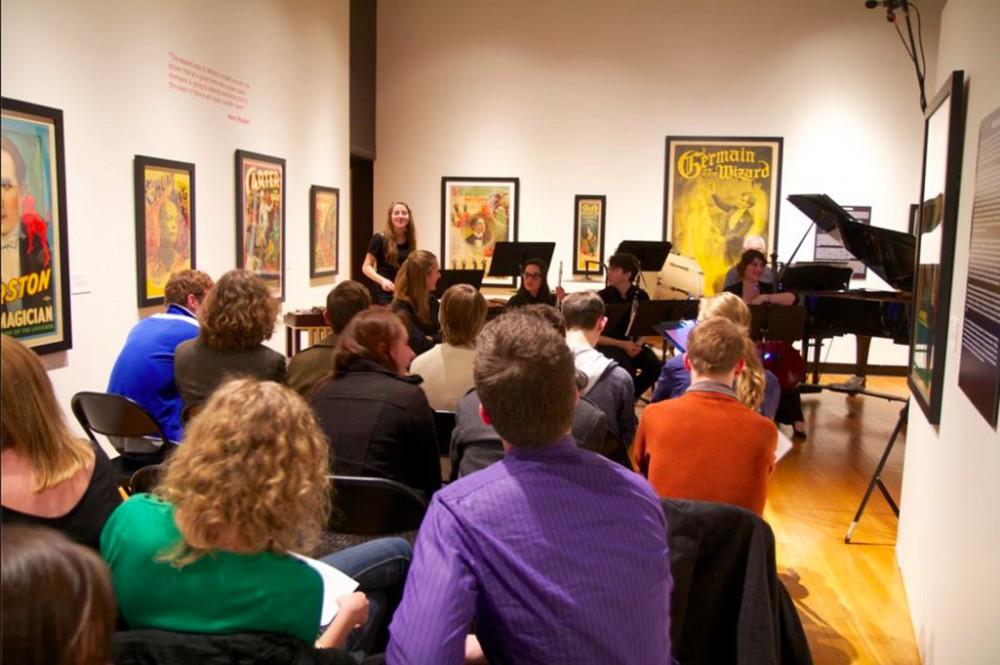Competition gives composers 60 seconds to create

Courtesy / Bill Ryan GVSU New Music Ensemble Annual Composition Competition
Mar 12, 2014
In January, the Grand Valley State University Art Gallery unveiled “The History of Space Photography,” which features 50 noteworthy images taken during the last 50 years of space exploration. While this exhibit, located in the Performing Arts Center on the Allendale Campus, provides visitors with an astounding visual experience in itself, a group of students has worked to further enhance the gallery by adding a musical element to the mix.
Since 2009, the Grand Valley State University New Music Ensemble has held an annual composition competition in which student composers prepare original 60-second works inspired by specific pieces found in the GVSU Art Gallery. This year’s competition boasts compositions that mesh with items organized by the California/International Arts Foundation and are comprised of images snapped by astronauts, astronomers and data visualization experts. The performance is being held March 13 at 8 p.m. in the GVSU Art Gallery and is free and open to the public.
The composers are aware of who the performing musicians are ahead of time and what instruments they will be using. This year, the ensemble will include a piano, cello, clarinet, flute, saxophone, violin and percussion. The compositions are submitted anonymously and then premiered by the ensemble among the exhibit that inspired the works. Out of the 28 submissions, three winners will be selected by the panel of judges to receive cash prizes. There are no guidelines for the judges, meaning that they will come up with their own criteria and simply choose the works that they like best.
According to ensemble director Bill Ryan, the student composers aren’t just in it for the cash prizes.
“This is a good opportunity for the composers to practice writing something with a fixed, brief duration,” Ryan said. “It’s very challenging to present something interesting when you only have 60 seconds to do so.”
In prior years, the composition competition was based on GVSU Art Gallery exhibits that dealt with a variety of topics, such as Pueblo Indian pottery and the American Museum of Magic.
Ryan added that it’s also a challenge for students to compose a piece for both acoustic instruments and electronics — something that the competition requires. By performing each of the entries, the contest also allows for the seven performing members of the GVSU New Music Ensemble to put their skill sets to the test.
“For the ensemble members, the biggest challenge is being able to rapidly perform the 26 works,” he said. “Each one is very different, and to be able to switch gears every minute is quite difficult.”
According to Joshua Dreyer, the ensemble’s percussionist, the competition is actually more of an educational exercise.
“The composers get to see how their music sounds when it is played and if they should’ve done things differently,” Dreyer said.
He explained that although the composers are looking to the same exhibit for inspiration, each of the 28 submissions should sound very different from one another. The concert is an opportunity that is unique to GVSU.
“At many schools you can’t get your pieces performed because a lot of schools don’t have full ensembles,” Dreyer said. “And if they do, they don’t necessarily have enough time to perform the pieces that the students compose.”
New music is gaining further traction at GVSU and continues to be an inspiration to its young composers.






















